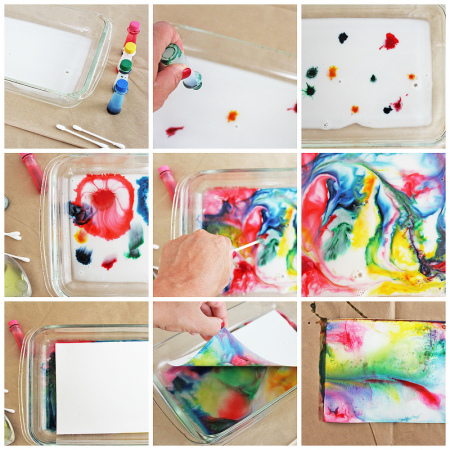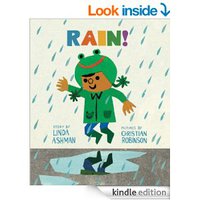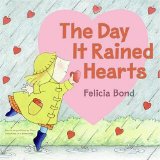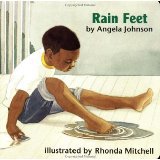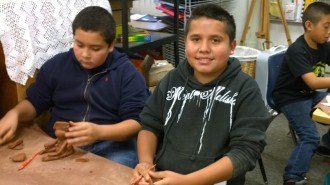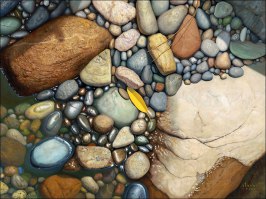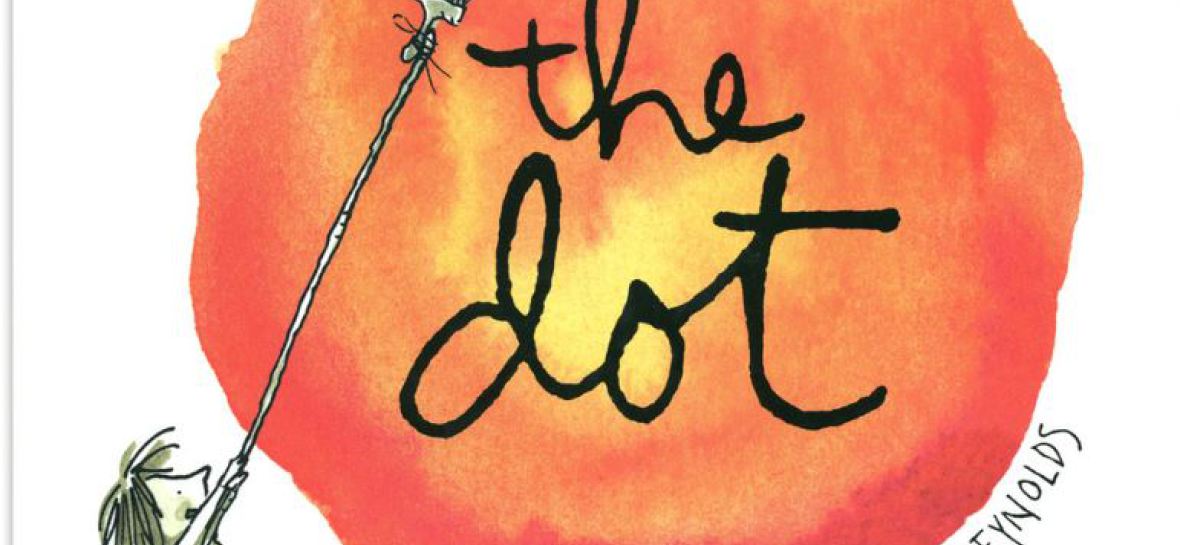

Puddle Jumpers
Playing in the Rain
Goldilocks has invited her little bears to come and play
OUTSIDE the art room, just for today.
(Because it's raining)
The worms will think they’re giants, Rain puddles will be sky
Blue Bird will be watching from up on high
(Because it's raining)
Goldilocks and her little bears will dance in the rain
There is always magic when they’re together
(Even when it rains)
~C Schell
Rain
The rain is raining all around
It falls on fields and trees
It rains on the umbellas here
and on the ships at sea.
~ Robert Louis Stevenson
Marbled Milk Paper Butterfly
"The Bird Friends of a Country Doll" By: Caroline Stetson Allen
" I hope." said Alice, "that you feed your babies wisely, on the creamiest of milk such as our clover gives."
"Milk!" exclaimed the bluebird in disdain. "My babies wouldn't look at it! Insects are what they like best."
"Insects," cried Alice, and her eyes grew as big as saucers.
"And worms," said the bluebird.
Alice fell flat on her back with horror.
"Why certainly," said the bluebird. "What is there surprising about that? Just try a worm someday."
"Give me some water!" Moaned Alice faintly.
P19
- Almond Milk preferred (Cow’s milk may be substituted)
- Dish soap
- Eye Droppers (optional)
- Q-tips or toothpicks
- Food Coloring
- Watercolor paper
- Tray/Shallow Dish
- Step One: Cut your watercolor paper to a size that easily fits within your tray. Place the stack of paper near your tray; once your start swirling the colors you will have to work quickly to get the best effects.
- Step Two: Pour roughly 3-4 tablespoons of almond milk into a tray; basically enough for a thin layer of milk that covers the bottom of your tray.
- Step Three: Add in drops of food coloring around the milk.
- Step Four: Add a couple dollops of dish soap around the tray. The soap and food coloring will now start interacting.
- Step Five: Using a q-tip or toothpick, begin swirling the colors.
- Step Six: Before the colors get too mixed together take one sheet of paper and lay it on top of the milk mixture. Press down. Gently lift it, set aside to dry, and continue with additional sheets.
- Step Seven: Let everything dry completely.
Read Alouds & Read Togethers
<< New text box >>
The Standards
RF.K.1 I can understand how books are meant to be read. RF.K.1A I can read the words in a book in the right order. RF.K.1B I can understand that words I say can be written using letters in a certain order. RF.K.1C I can understand that words have spaces between them. RF.K.2A I can recognize and make rhyming words.
“I Can” Read fiction (Reading – Literature) I can read, understand and tell about fiction. RL.K.1 I can ask and answer questions about important details in stories. RL.K.2 I can retell a story I know using important details from the story. RL.K.3 I can tell the characters, setting and what happens in stories. I can read, understand and tell about fiction. RL.K.1 I can ask and answer questions about important details in stories. RL.K.2 I can retell a story I know using important details from the story. RL.K.3 I can tell the characters, setting and what happens in stories.RL.K.7 I can tell how the words and pictures go together in stories. RL.K.9 I can tell what is the same and different about the actions of characters in stories I know. RL.K.10 I can be an important part of fiction reading activities in my classroom.
"I Can Read Non Fiction "RI.K.8 I can find the reasons an author gives to make the information more clear. RI.K.9 I can tell how two nonfiction books about the same thing are alike and different.
I can use research to help my writing. W.K.7 I can help my class learn about a subject and then write about it. W.K.8 I can use what I know and have read about to answer questions.W.K.1 I can draw or write to help me share what I think. W.K.2 I can draw or write to help me explain about a topic. W.K.3 I can draw or write to tell an organized story about something that has happened.
I can share my ideas and what I have learned. SL.K.4 I can use details when I tell about people, places and things. SL.K.5 I can use drawings to help add details to what I share. SL.K.6 I can speak and share my ideas clearly.
K.OA.A.3 I can take apart any number from 1 to 10 to show that I understand that number. (5 = 2 + 3)
Visual ART
C Create:Engage in selfdirected play with materials.Use a variety of artmaking tools, a. Share materials with others.Share and talk about personal artwork.
- 2.3 Experiment with colors through the use of a variety of drawing materials and paints.
A Articulate:
Identify reasons for saving and displaying obects, artifacts, and artworks.
Identify places where art may be displayed or saved.
Identify where art is displayed both in and outside school.
- 1.2 Identify colors by name.
F Finding Connections
- 3.2 Describe pictorial objects that appear in works of art.
E Engaging with the Arts
Recognize art in their environment.
Distinguish between images and real objects.
Interpret art by identifying and describing subject matter.
Select a preferred artwork.
Derive Meaning
- 4.1 Discuss what is seen in works of art.
- 4.2 Ask questions about works of art.
Make Informed Judgments
- 4.3 Discuss what they like about their own works of art.
- 4.4 Select works of art by others and tell what they like about them.
Part one experience is going outside and dancing in the rain (moving, jumping, splashing, twirling) to a rhythm
Part two is students drawing a self portrait of themselves dancing in the rain.
While students are on carcpet revisiting rain stories or at tables drawing selfportraits, small groups come to the table where we create our milk paint and paper prints. We use descriptive words for colors, actions, and sounds of rain as we quietly work.
Dancing & Singing in the Rain
a. Respond in movement to a variety of sensory stimuli (for example, music/sound
b. Find a different way to do several basic locomotor and non-locomotor movements. Hop like a frog, waddle like a duck,wiggle like a worm, flap like a bluebird, twirl like the umbrella
a. Respond to suggestions for changing movement through guided improvisational experiences.
b. Identify parts of the body and document a body shape or position by drawing a picture
Rain Walk
Hopping over puddles
Exploring rivers
Looking on an upside down world
Though a lake's eyes
Pretending to be giants
in an earth worm's world
And exploring the muck
under the drain storm pipes
We took a rain walk
And I was their guide.
~ C. Schell
Artful Teaching
Mrs. Schellenberg & Young Artists
Ralph Waldo Emerson's Poem: Success- to leave the world a bit better, whether by a healthy child, a garden patch or a redeemed social condition; To know even one life breathed easier because of you.
Thank you AT&T
We used the wiring for our artful galimotos








